#Roman mosaic
Text




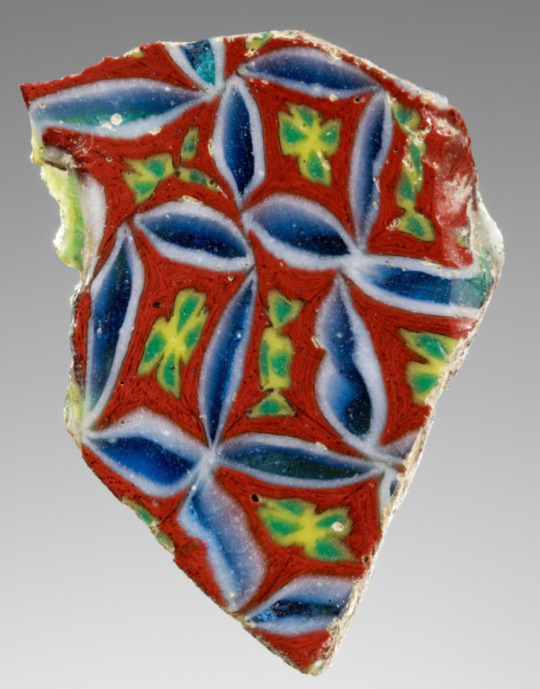
Beautiful colors from Ancient Rome
Mosaic plaque fragments from late Roman Republic time
Current location: J. Paul Getty Museum.
55 notes
·
View notes
Text

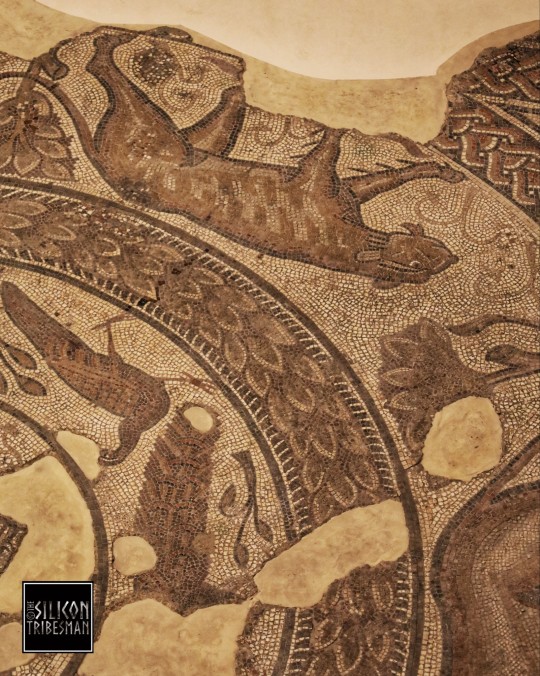

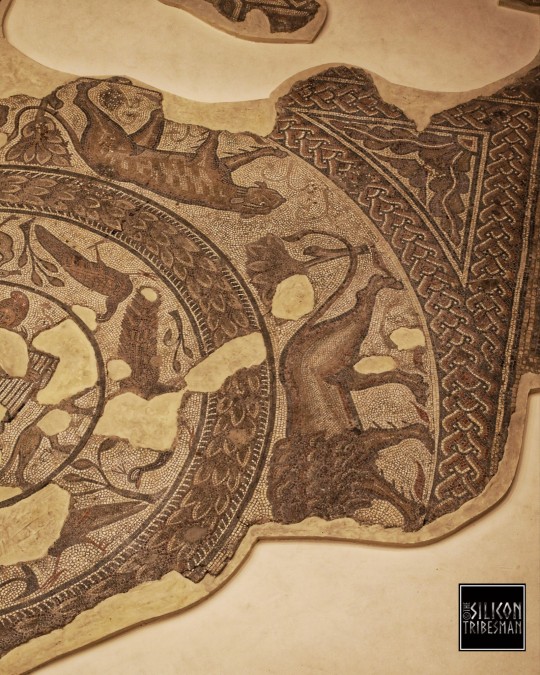
Roman Mosaic Pavement Section, Corinium Museum, Cirencester
#Roman#romans#roman mosaic#roman britain#roman empire#roman symbols#tiger#lion#archaeology#ancient craft#ancient cultures#ancient history#Corinium#Cirencester#relic#design#mosaic
32 notes
·
View notes
Text
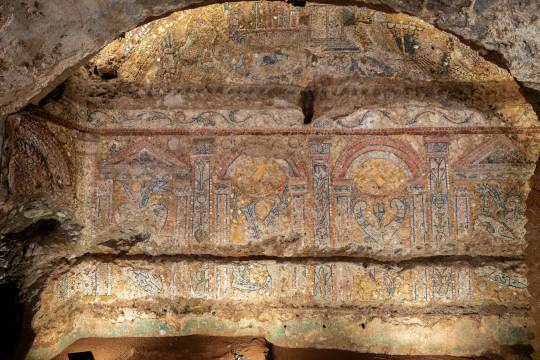
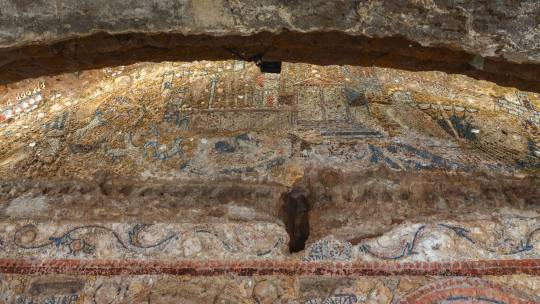
‘Incredible’ Mosaics Were Found in an Ancient Luxury Home in Rome
Italy’s Culture Minister Gennaro Sangiuliano has called the works “an authentic treasure.”
Researchers working in the Archaeological Park of the Colosseum in Rome have shared their discovery of luxurious mosaic-tiled rooms found in an ancient home on the site, which they believe may have belonged to a Roman senator. Created from shells, glass, white marble, and Egyptian blue tiles, the mosaics have been described by Italy’s Culture Minister Gennaro Sangiuliano as “an authentic treasure”.
The “rustic” mosaics, found on the grounds surrounding the Colosseum in the heart of the city, date to the late Republican Age, in the last decades of the second century B.C.E., and show a series of figurative scenes. They once decorated a townhouse, or domus, owned by an upper class citizen. Italy’s Ministry of Culture have said that “due to the complexity of the scenes depicted” and their age, the mosaics are “without comparison.”

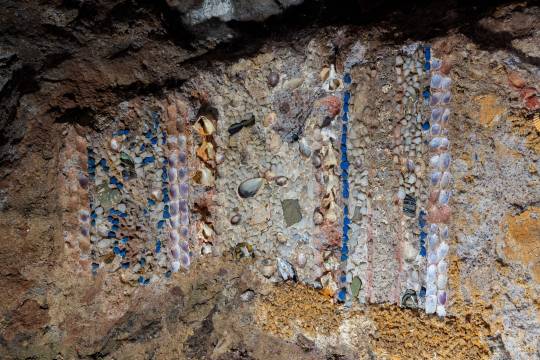

One mosaic depicts a coastal city with towers and porticos, with three large ships floating by on the ocean waves. The culture ministry believes this could be a reference to naval victories achieved by the owner of the home, which is believed to have been a Roman senator. This is supported by historical sources describing the area as having been occupied by such high-ranking members of society.
The decorated walls were likely located in the home’s dining rooms, where luxurious banquets would be hosted, and guests at these events were likely wowed with “spectacular water games,” according to the culture ministry, based on the presence of lead pipes set into the walls.
In the reception room, an extremely well preserved decorated stucco featuring landscapes and figures was also discovered. Other designs include vines and lotus leaves flowing from vases, musical instruments, and tridents.

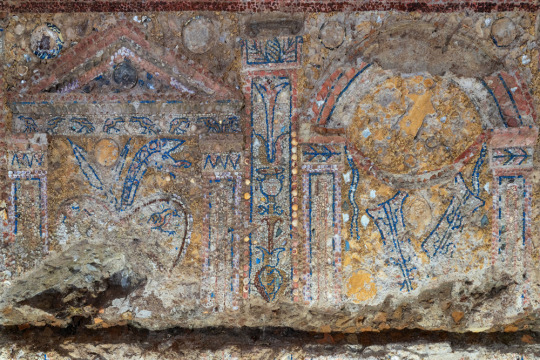

The mosaic walls were first discovered near the Colosseum in 2018, but excavation at the site will continue into 2024, and more rooms could be discovered. Alfonsina Russo, the Director of the Archaeological Park of the Colosseum, has said that once the domus is full uncovered, “we will work intensely to make this place, among the most evocative of ancient Rome, accessible to the public as soon as possible.”
By Verity Babbs.
#‘Incredible’ Mosaics Were Found in an Ancient Luxury Home in Rome#Archaeological Park of the Colosseum#Late Republican Age#second century B.C.E.#mosaic#roman mosaic#ancient artifacts#archeology#archeolgst#history#history news#ancient history#ancient culture#ancient civilizations#ancient rome#roman history#roman empire#roman art
728 notes
·
View notes
Text

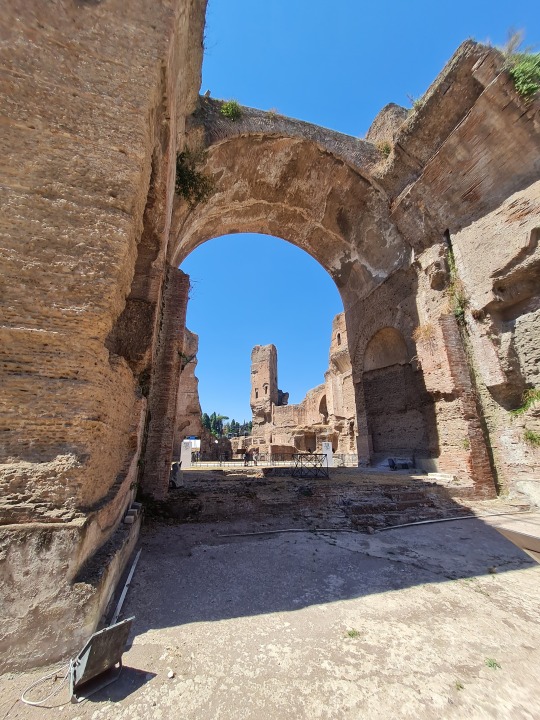

The Baths of Caracalla in Rome, Italy
The Baths were unprecedented in size: 1600 Romans could bathe at the same time. Apart from the bathing facilities, there were two libraries and there were shops, offices, gardens and even an area for sport. It simply didn't fit inside of Rome, and that is why it was built just outside of it, by the Appian Way (Via Appia).
#baths of caracalla#ancient rome#ancient history#ancientmonuments#roman empire#roman emperor#rome#italy#italia#roman architecture#architecture#architettura#ruins#history#culture#archaeology#roman archaeology#roman history#mosaic#roman mosaic#travel#traveling#travel photography#photography#wanderlust#vacation#travel tips#travel destinations#explore#.5k
953 notes
·
View notes
Text

Mosaic from Stabiae Villa San Marco in glass tesserae depicting a statue of a gloved boxer on a pedestal wearing a wreath, 1st century AD, Naples National Archaeological Museum
788 notes
·
View notes
Text

Roman skull mosaic representing the Wheel of Fortune
1st century BC
#ancient art#antiquities#mosaic#roman art#roman mosaic#skulls#skull art#skull aesthetic#ancient culture#ancient people#ancient artist#ancient artifacts#artifacts#historical artifacts#historical art#art history#aesthetictumblr#tumblraesthetic#tumblrpic#tumblrpictures#tumblr art#tumblrstyle#artists on tumblr#aesthetic
400 notes
·
View notes
Text

Roman Mosaic, 5th century CE
261 notes
·
View notes
Text
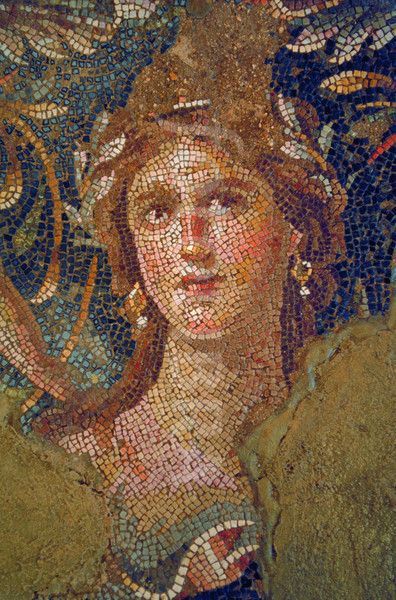
A mosaic in Zippori, referred to as the "Mona Lisa of Galilee"
283 notes
·
View notes
Text
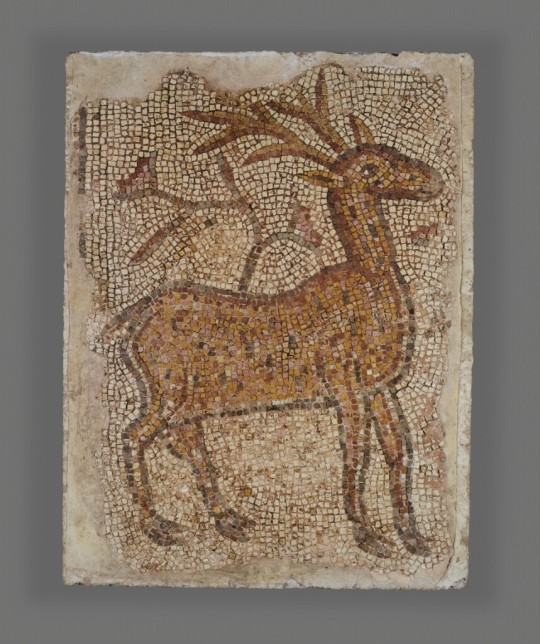
Mosaic Fragment with Stag (Roman, 5th-6th century).
Getty Museum Collection.
95 notes
·
View notes
Text
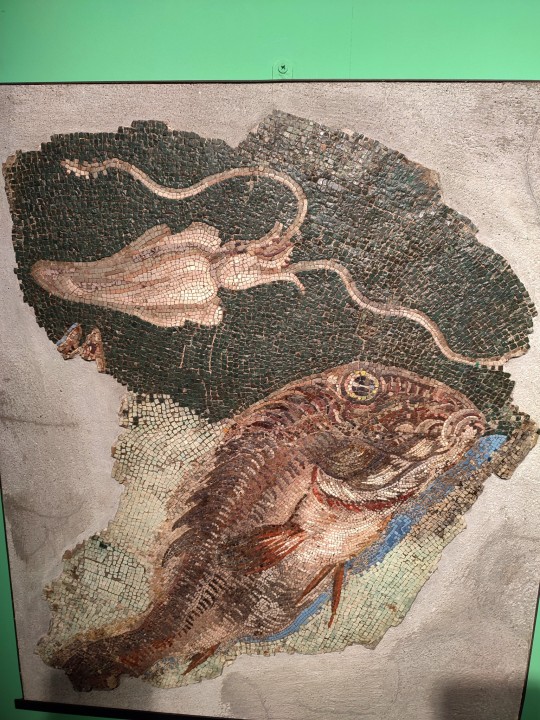
I present to you... More fish
#roman mosaic#Ancient art#I do think about the Roman empire#Roman empire#Mosaic#Art#Fish#Squid#ancient civilizations
165 notes
·
View notes
Text
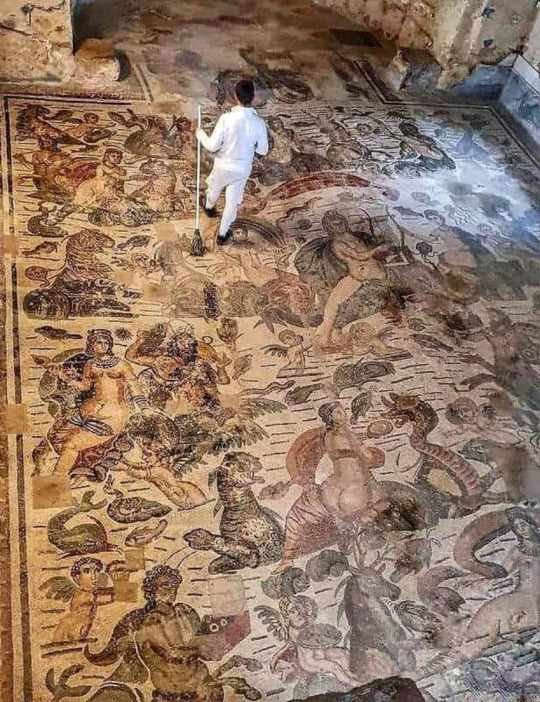
Ancient Roman mosaic floor at Villa Romana del Casale, Sicily, Italy, depicts mythical creatures and characters from Greek mythology.
3K notes
·
View notes
Text

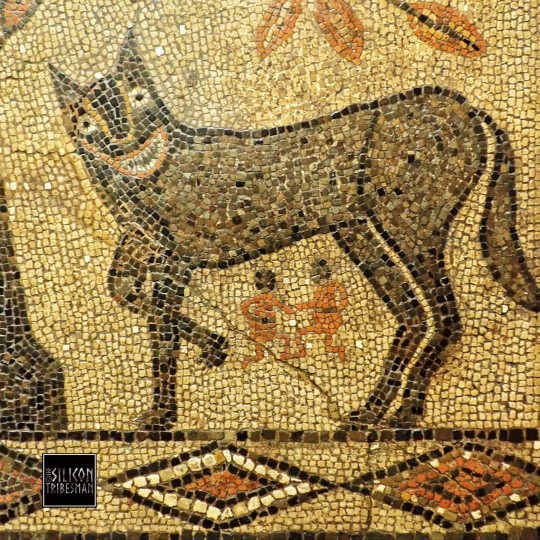

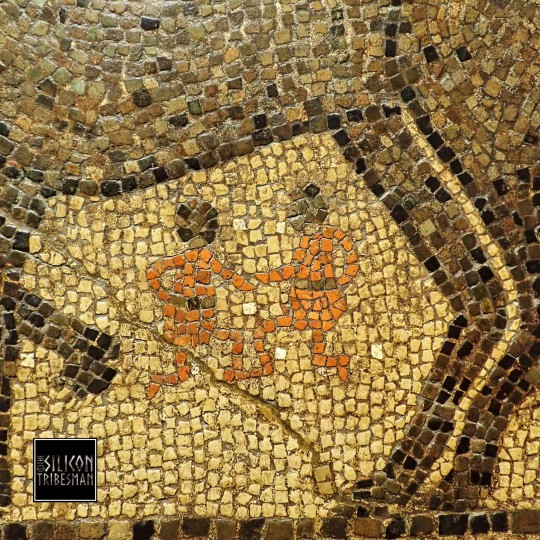
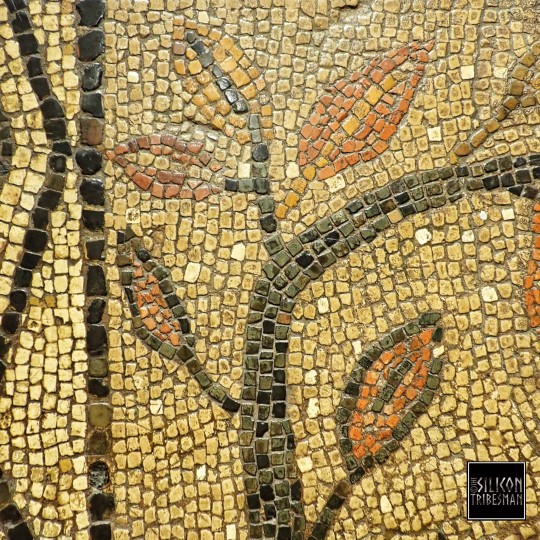
The Wolf and Romulus and Remus Mosaic, Roman Aldborough, North Yorkshire, 300-400CE, Leeds City Museum.
This panel formed the centrepiece of a large mosaic floor constructed in the Roman town of Isurium Brigantum, now Aldborough in North Yorkshire. The mosaic depicts the legend of Romulus and Remus. They were abandoned in the River Tiber but washed ashore where they were fed by a she-wolf.
#romulus and remus#she wolf#roman#roman myth#romans#roman culture#roman villa#roman mosaic#roman craft#roman britain#ancient living#ancient craft#ancient cultures#relic#archaeology#artefact#roman empire#mythology#roman living
785 notes
·
View notes
Text
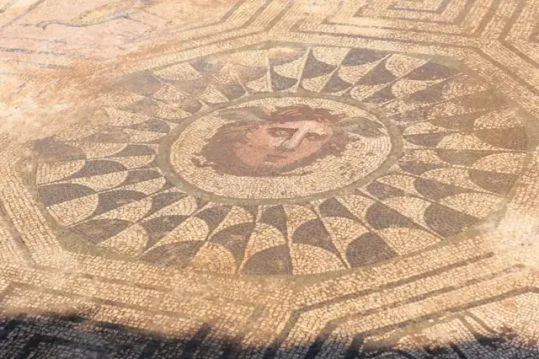
Archaeologists Unearth Ancient Mosaic of Winged Medusa in Spain
The stunningly preserved Ancient Roman mosaic floor was found at the Huerta de Otero site in the city of Mérida.
In both ancient and modern interpretations, Medusa is often known as a monster — a Gorgon with tresses of serpents whose stare turned men to stone. This version typically appears in children’s movies and fantasy thrillers, but her image hasn’t always been so awe-inspiring. In late June, archaeologists in Western Spain uncovered an Ancient Roman mosaic floor that depicts Medusa with tiny wings and flowing locks of hair, thought to have been used as a protective symbol.

The mosaic was found in the city of Mérida’s Huerta de Otero archaeological site. Ancient Romans established a colony there in 25 BCE named Augusta Emerita. Traces of its former inhabitants — including an amphitheater and a bridge — can be found throughout the modern-day city. “[The site] is of an exceptional nature due to the level of conservation of the ruins and, above all, the ornamental elements that decorate the well-preserved house: not only the mosaic of the Medusa but also paintings and sculptural motifs,” said archaeologist Félix Palma in a statement.
The Huerta de Otero location was excavated in 1976 but lay untouched for decades. Research picked back up in 2019, when the city employed professional archaeologists and students from its Barraeca II Professional School to explore the ruins. Since then, the team has uncovered an Ancient Roman defensive wall, a road, and the home of a wealthy family.
The Medusa mosaic adorned the floor of this home. Depictions of fish, peacocks, and carefully tessellated patterns surround the artwork’s central figure: a human-like Medusa, her gaze turned to one side.
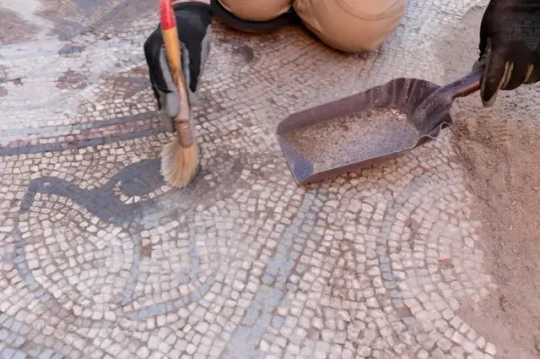
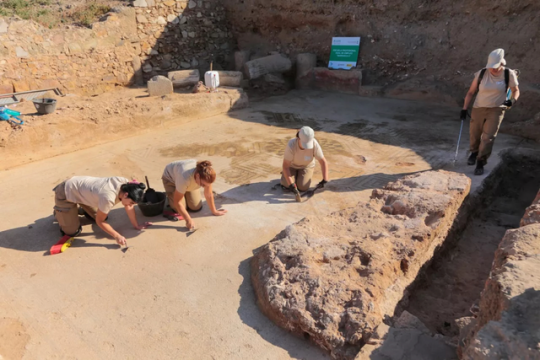
Although this image diverges from some contemporary renditions of the mythological figure, the mosaic’s winged version was common in Ancient portrayals of Medusa. While early Greek depictions of the mortal-turned-monster, cruelly punished for being raped by the god Poseidon, show her as grotesque, Medusa’s image softened by the time of the Ancient Romans. Beginning in the Classical Greek period, her face acquired more human attributes. It started to be rendered with symmetry and youthful beauty in the following centuries.
Other Ancient Roman mosaics featuring the head of Medusa have been discovered throughout Spain. Medusa again comprises the focal point of an Ancient Roman mosaic in a 115–150 CE work found in Rome, where she can be seen sporting human curls and a snake around her neck. A 1st-to-2nd-century ornament from a chariot pole shows a young woman with curly locks (although a couple of snakes still peer through her tangle of hair).
In Ancient Greek mythology, Perseus killed Medusa to avoid being turned to stone. Medusa, in her early terrifying form, was used as a protective symbol — “an image of evil to repel evil,” Madeleine Glennon writes in a 2017 essay for the Metropolitan Museum of Art. The goddess Athena famously included a representation of Medusa’s severed head on her protective cloak or aegis. In Ancient Rome, her beautified image was still employed as a protective symbol, although the depiction shifted into a form more similar to a woman than a monster.
By Elaine Velie.

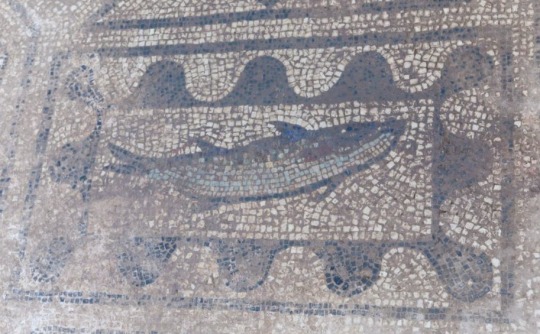
#Archaeologists Unearth Ancient Mosaic of Winged Medusa in Spain#mosaic#roman mosaic#Mérida Spain#Huerta de Otero archaeological site#ancient artifacts#archeology#archeolgst#history#history news#ancient history#ancient culture#ancient civilizations#roman history#roman empire#roman art
600 notes
·
View notes
Text
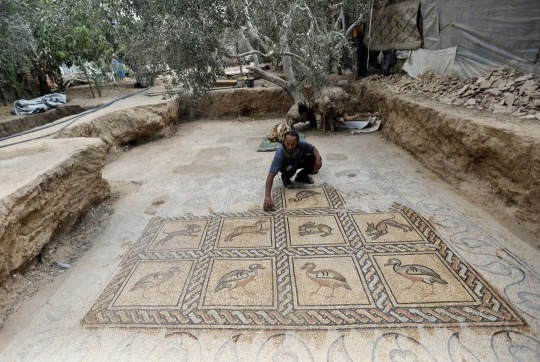


Palestinian farmer Salman al-Nabahin with a Byzantine-era Roman mosaic he discovered while trying to understand why the olive trees he planted weren't taking root. Archaeologists with the Palestinian Ministry of Tourism and Antiquities and the French Archaeology School believe artists created the flooring sometime between the fifth and seventh centuries.
62 notes
·
View notes
Text


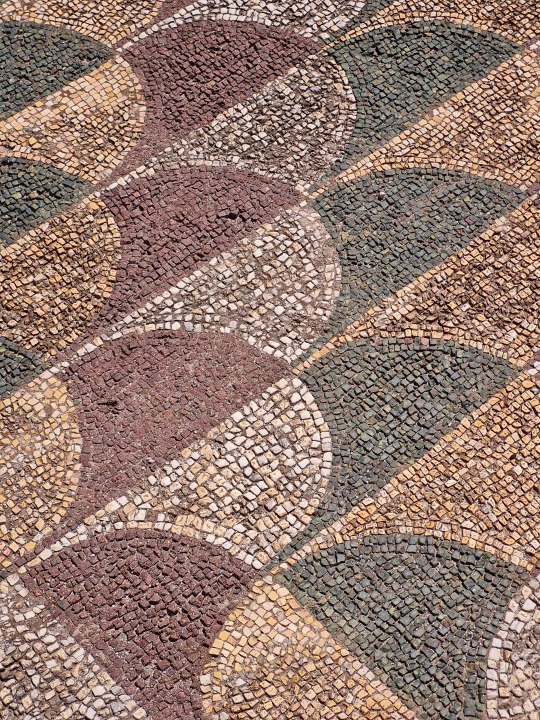
The art of the Baths of Caracalla in Rome, Italy
#baths of caracalla#rome italy#rome#ancient rome#italy#italia#architecture#roman architecture#mosaic#roman mosaic#history#culture#photography#photographers on tumblr#travel#travel photography#traveling#wanderlust#vacation#explore#travelling#art#roman art#roman archaeology#archaeology#roman ruins#ancient history#ancientmonuments#travel destinations#roman empire
89 notes
·
View notes
Photo
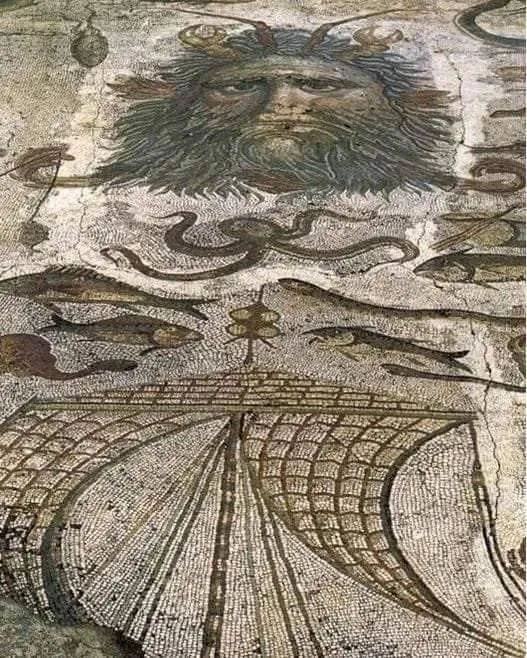
A Oceanus mosaic with maritime life and a sailing vessel, discovered in ancient Hadrianoupolis, Eskipazar district, Karabük province, Turkey, Roman, 2nd- 4th century AD
169 notes
·
View notes